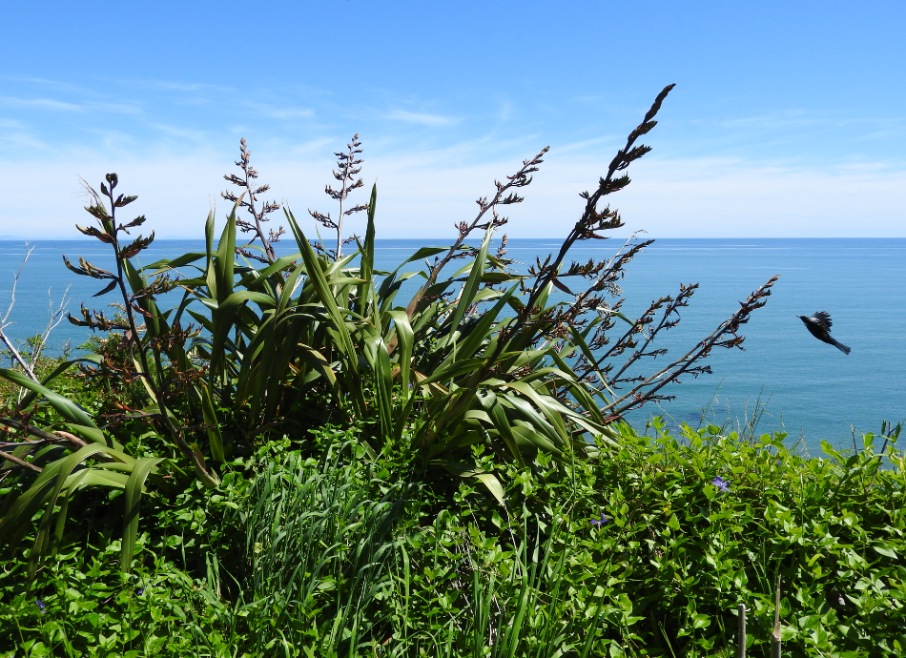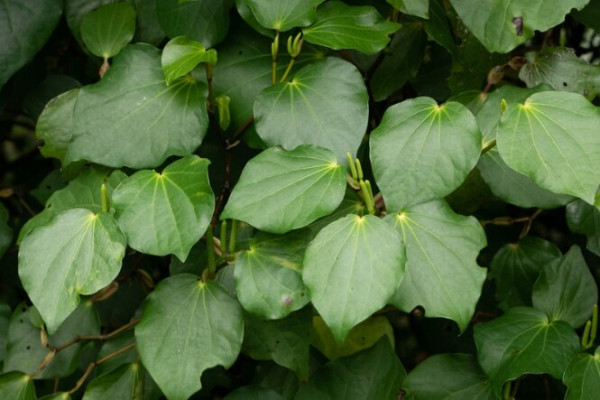Wishing everyone happy holidays and a joyful New Year from the Healthify team. Don't forget to Slip, Slop, Slap and Wrap!
Rongoā Māori
Key points about Rongōa Māori
- Rongoā Māori is traditional Māori healing, which encompasses herbal remedies, physical therapies and spiritual healing.
- This page has been prepared by Dr Audrey Robin, a Māori GP, as an introduction to traditional Māori healing.
- It is intended to deepen understanding of Rongoā and its importance in Māori health care.

"Rongoā Māori is a taonga (gift). It is something that is highly valued, to be treasured, treated with the upmost care and respect." (Quote from Pa Ropata).
Rongoā Māori was taught within Māori whānau and hapū through verbal communication and observation alongside a tohunga (an expert with the knowledge). Although few people have had a chance to learn in this way, its growing interest has allowed for the development of workshops and more formal qualifications.
Rongoā Māori is a lifetime journey for those who care for or utilise it. Rongoā Māori is seen in two main forms – rongoā rākau and Te Oo Mai Reia.
Rongoā rākau (plant remedies) are plant or tree-based medicinal remedies. For examples of plants used in rongoā Māori, see Demystifying Rongoā Māori – traditional Māori healing.(external link)

Kawakawa Image credit: Science Learning Hub – Pokapū Akoranga Pūtaiao, University of Waikato, www.sciencelearn.org.nz
Te Oo Mai Reia (spiritual healing) utilises different physical techniques alongside spiritual ones. Te Oo Mei Reia can be seen as Māori healing through prayer, cleansing work and bodywork, known as mirimiri (massage) and kōmiri (deep massage). Please note: the name of this type of healing and the variations may change from iwi to iwi but the principles remain the same.
The most fundamental part of rongoā Māori is the traditional spiritual teachings, which can be seen as the basis of all traditional medicine. For Māori, rongoā is a part of the Māori culture from Tāne (God of the forest) who retrieved the three baskets of knowledge from Io (God) with the knowledge and teachings to guide us in this world.
As Māori, we believe we are part of the children of Tāne, along with the creatures of the forest such as the birds, trees and plants and, therefore, we have a strong connection to rongoā rākau. To learn rongoā, people have to become apart of the world of Tāne. They become connected and immersed in the forest, learning about a relationship far beyond the physical elements of the trees and plants. To utilise Te Oo Mai Reia, the healer must become immersed in ancient spiritual teachings while becoming a vessel to achieve the healing through Io alongside the use of physical touch to create balance and shift energies.
I have much respect for all tohunga who utilise rongoā for healing to facilitate balance back into one's life force. The journey to becoming a rongoā practitioner varies from person to person and in more recent times is becoming more formalised. In the past and even in more recent days, kaumātua from many iwi have feared the consequences of passing on their knowledge to those who may use it for the wrong reasons or skip the important lessons, therefore becoming liabilities to whānau and their patients due to mistakes.
Over the years rongoā practices have been seen as a scarcity that has encouraged those with the knowledge to come fourth and educate. Rongoā is often used by kaumātua (elders) due to their knowledge and upbringing. We must not forget that people have been using rongoā for thousands of years as an holistic system of healing, therefore may want to utilise this in conjunction or as an alternative to western medicine. It is often used by those who are aware of healers in their area that provide rongoā, with clear instructions on how to use it correctly and safely.
Rongoā Māori can help manage your pain by changing the balance and negative energies within your body. Although, Māori traditional medicine is more widely known for the medicinal properties from the native trees and plants, which is often used to address acute pain, the most fundamental part of all rongoā is the spiritual component. The spiritual healing focuses more on the cause of pain, using techniques such as massage and prayers to help release negative energies.
Whānau may use rongoā rākau as a first line before seeking western medicine for a variety of conditions. For example, with regard to pain:
- stomach aches: the shoot of the koromiko plant (hebe) is chewed
- eye pain: the bark of houhere (lacebark) is soaked in cold water to form a jelly which is applied to the eyes
- sore eyes: leaves of the makomako (wineberry) are boiled and also can be applied directly over the eyes
- aches and pains: a compress of the leaves of karamū (coprosma) is applied to the painful area
- joint aches: an infusion of the leaves of the māhoe (whiteywood) or the bark of makomako is bathed in
- muscle aches, sprains, swollen joints: the leaves or all parts of the tutu/tūpākihi (Coriaria arborea) are boiled and applied to wounds as a poultice or the liquid used to soak in. More commonly, these days, a towel maybe soaked in the hot infusion then applied to the painful area
- bladder and kidney pain: the shoot of the karamū (coprosma) is boiled in water or an infusion is made of the leaves of the mānuka (red) or kānuka (white tī/tea tree) to drink
- toothache: kawakawa (Māori pepper tree) leaves chewed to relieve toothaches and swelling associated or the liquid from boiled leaves of the matipo (māpau) is also effective.
A patient with acute or chronic pain may seek rongoā rākau to treat the illness or area causing pain. They may then seek Te Oo Mei Reia to help understand the root cause of the pain, to allow for the process of healing through a combination of practices as discussed above.
For rongoā rākau to be utilised, the rongoā practitioner will have knowledge of the medicinal properties of the plants and trees and the safe practices. Their awareness of how to care for themselves when healing their patient is also important.
For rongoā rākau to be used safely, the practitioner must be open to the Māori world, first and foremost karakia. Rongoā can be harvested differently iwi by iwi and healers will generally have their own special place they will harvest from. The majority of principles will align with the following:
- When do we harvest: when the light first touches the forest. This is a time that we believe the plants/trees will reveal themselves for selection. In addition, we must take time selecting which tree we shall harvest.
- Karakia (prayer or blessing): everyone will karakia in their own way. Some believe that the karakia tawhito, also known as takutaku or kaupare, karakia handed down by our ancestors pre-colonisation, is the only karakia that is appropriate. However, my teachings have shown me the most important thing is to prepare ourselves from all the stresses of the living world in order to focus on the person or reason you are collecting rongoā. The karakia must come from our heart to allow the mauri (life force) to heal to become a vessel, a pathway to Io. It is the words that matter and the mauri that gives power to the words. (Pa Popata)
- Harvesting: we only harvest what the tree is prepared to give, at a certain time of the day, with a person in mind/patient (tūroro) or a specific reason, using all our senses (sight, touch, smell, taste and hearing). There are rules such as to never pick where someone else has just harvested. We should never forget, "we not only take from the forest but also accept responsibility of being a carer (kaitiaki)”. (Pa Ropata)
- Return what we have used back to the forest: this is a responsibility of all practitioners for many reasons. On a practical level we must give back the nutrients that remain within the plants/trees so that they can be reabsorbed by the forest to maintain its own wellbeing. We karakia while giving thanks for the use of the forest's healing.
It is important that the practice around rongoā is upheld and maintained. The process not only ensures the practitioner is safe in choosing the right tree/plant but also in ensuring the pure ailments of healing is at its optimal.
Some patients may be unwilling to admit to their doctor that they are using traditional rongoā. We must be open as practitioners so that we are fully aware of any conflict that may occur. We do not have evidence around any significant interactions with western and rongoā rākau at this time. Some plants have toxic properties, so it's important that people who collect rongoā have the correct knowledge. As people gain more knowledge we must remember that it is a lifetime journey with ancient traditions that must be adhered to in order to create optimal health.
Titoki programme(external link) Tauranga
Using rongoā Māori services(external link) ACC, NZ
VIDEO – injured? Don't tough it out(external link) ACC, NZ
Scientists explore kawakawa's healing properties(external link) University of Auckland, NZ, 2023
References
- Rongoā Māori – a practice guide to traditional Māori Medicine. Rob McGowan, May 2009.
Acknowledgement from Dr Audrey Robin
My knowledge of Te Oo Mei Reia is through the teachings of the late Papa Joe Delamere and my knowledge of rongoā rākau is through Pa Ropata McGowan, augmented by my upbringing, whānau health needs and ongoing knowledge shared by different healers from different areas in Aotearoa.
Is there a role for Rongoā Māori in public hospitals? The results of a hospital staff survey
Knowledge of rongoā Māori was investigated in an internet-based survey of staff at Waitematā District Health Board. The survey response rate was 19.6% (1181 responses from approximately 6000 staff) and responders were predominantly female (80%), medical practitioners or nurses (66%) and of European ethnicity (67%); 18% of responders were Māori. Familiarity with rongoā Māori was reported by 46% of responders and 16% had used rongoā Māori on themselves or whānau. Availability of rongoā Māori within the hospital system was supported by 32% of responders.
Koea J, Mark G. Is there a role for Rongoā Māori in public hospitals?(external link) N Z Med J. 2020;133(1513):73-80.
Credits: Dr Audrey Robin, GP, Ora Toa, Wellington
Last reviewed:
Page last updated:





